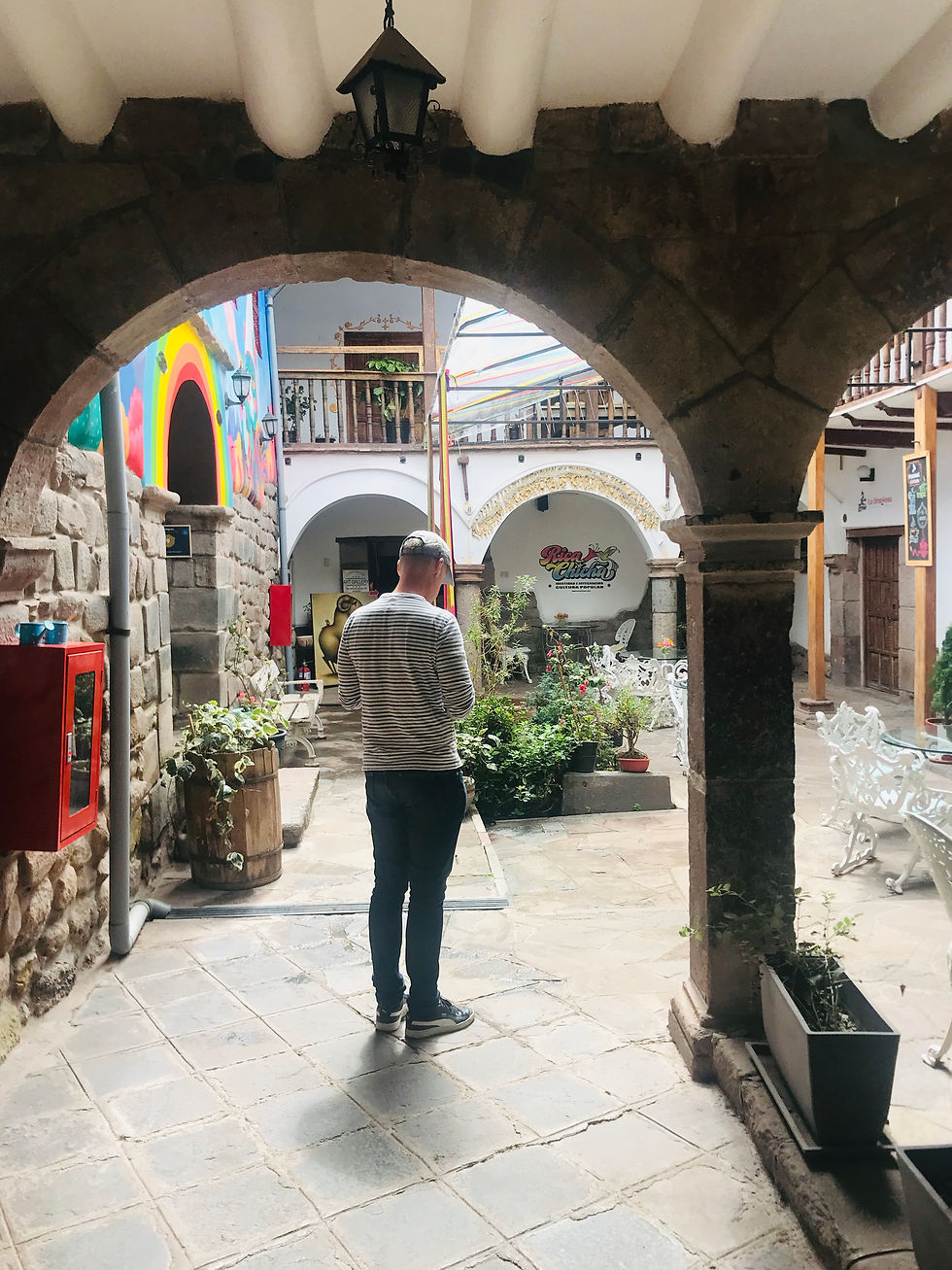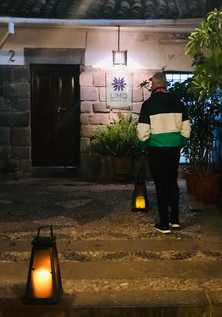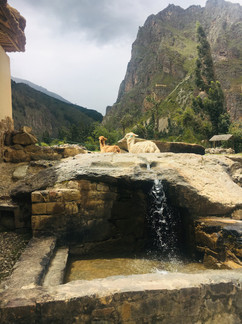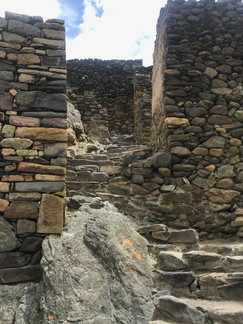Before and After
- RandE

- Apr 1, 2019
- 4 min read
We don’t use the words “life event” lightly and our trip to Machu Picchu definitely fits the bill. In so many ways, this trip will always be divided “before the Inca Trail” and “after the Inca Trail”. It defines a goal we had looked to and now look back on. There is something about disconnecting completely – challenging yourself in the process – and then sharing it with those you love. We returned, we reconnected and we had news that was also life changing, making Machu Picchu a life marker in more ways than one.

To prepare for Machu Picchu, it was advised we acclimate to the altitude with a few days in Cusco, Peru – elevation 3,399 meters. Our AirBnb was in a courtyard complex of Cusco culture. Restaurant, book shop, art gallery, tea house, bar and an exceptional coffee cart made Casa Montesinos really spesh. We relaxed, walked the streets of this former capital of the Inca Empire and admired the Spanish colonial architecture. Thinking we were in for “camping food” on the trail we splurged on a couple of great meals. Limo, a Japanese / Peruvian fusion restaurant was perfect for the rainy night we wandered in. The trout with Peruvian seasoning cooked in a hot pot was the stand out. Then for something more continental we found really tasty Italian food at a restaurant called Baco. If we’d known how good the food was going to be on the trail, we may not have stuffed ourselves for two nights in Cusco, but it was well worth it. We also had time to wash a huge load of laundry collected from the previous stays in Brazil and Colombia and find a shop that rented camping gear. There was no way we were going to haul hiking boots and rainwear along for months of travel. If you do the trek, give yourself a few days in Cusco before (and even after).
Traveling for almost 8 months is different than 2 or even 4 weeks away where you forget about home and the job, overspend on plastic and eat to the point you need a trainer when you return. Leaving for this amount of time, yet knowing you’ll be going back, makes you want to stay connected. No one wants to return as a stranger in your own land. It also means the world doesn’t stop for you - good or bad. Landing in Aguas Calientes where we re-acclimated after the trek brought word that we were losing one of our dearest friends. There had been some preparation for this news, but not so soon. It emphasised how far away we were. We wandered around this small mountain tourist town next to a roaring rapids of a river and drank a bit and toasted life and friendship. The next day we took the train to Urubamba to complete our exploration of this part of the Incan Empire.
For our overnight lodging before our tour of the Sacred Valley, the travel company must have looked at our ages and thought we were of a certain demographic. We were dropped off at this cavernous, dated hotel filled with grey nomads. There was a group of 6 in the restaurant recounting their tour bus tales complaining that no one spoke English; and our waitress offered karaoke as the featured nightly entertainment. We both expected the Peruvian Julie McCoy to greet us at any moment. The grounds were nice, the beds comfy and we were tired and slept well.
Our tour of the Sacred Valley started similar to most cultural and historic tours we’d been on during trips to Asia. The first stop was local handicraft markets where it was obvious we were brought in for the hard-sell. There was jewellery smithing, alpaca weaving and all the trinkets we’d been seeing along our trip in Peru. Great visual entertainment, but we weren’t buying.
Our guide got the hint and moved us along to the last Inca site we’d see: Ollantaytambo. Surprisingly, we were able to hike up and down the stairs without too much whinging and again kept asking ourselves how this empire was able to accomplish these builds without modern means.
We travelled through the Sacred Valley, stopped for lunch at a tour bus restaurant with an amazing ceviche bar and a llama on a lead, and then were driven back to Cusco.This is the green bowl of this area and farming is king. This rich green landscapes are interrupted by small villages with locals walking or driving in mototaxis - a more modern tuk tuk. On the roads, like most of South America, it becomes evident that the world that has been created or preserved for the tourist is markedly different from the one where most Peruvians live. Between tour guiding, selling trinkets on the streets, working in restaurants and driving visitors with disposable incomes, their everyday life is far from the tourists’ experience.
Our final days in Cusco were spent dealing with the “after” we were hoping would never come. We had lost our beautiful friend and we needed to change our plans and return to Sydney. With one more week of travel in Bolivia, we used most of our WIFI time to organise flights home and decide when we'd return to this adventure.























































































































The Inca Trail is one of the most important hiking routes in South America located in Peru - Cusco. This is influenced by its original Inca architecture, the archaeological remains along the road and the natural mix of jungle and cloud forest along the way, The duration is 4D / 3N, it is undoubtedly one of the best roads traveled and only authorized agencies can operate this magnificent route
https://www.crossoverperu.org/
https://www.crossoverperu.org/inca-trail-treks/inca-trail-trek-4d-3n